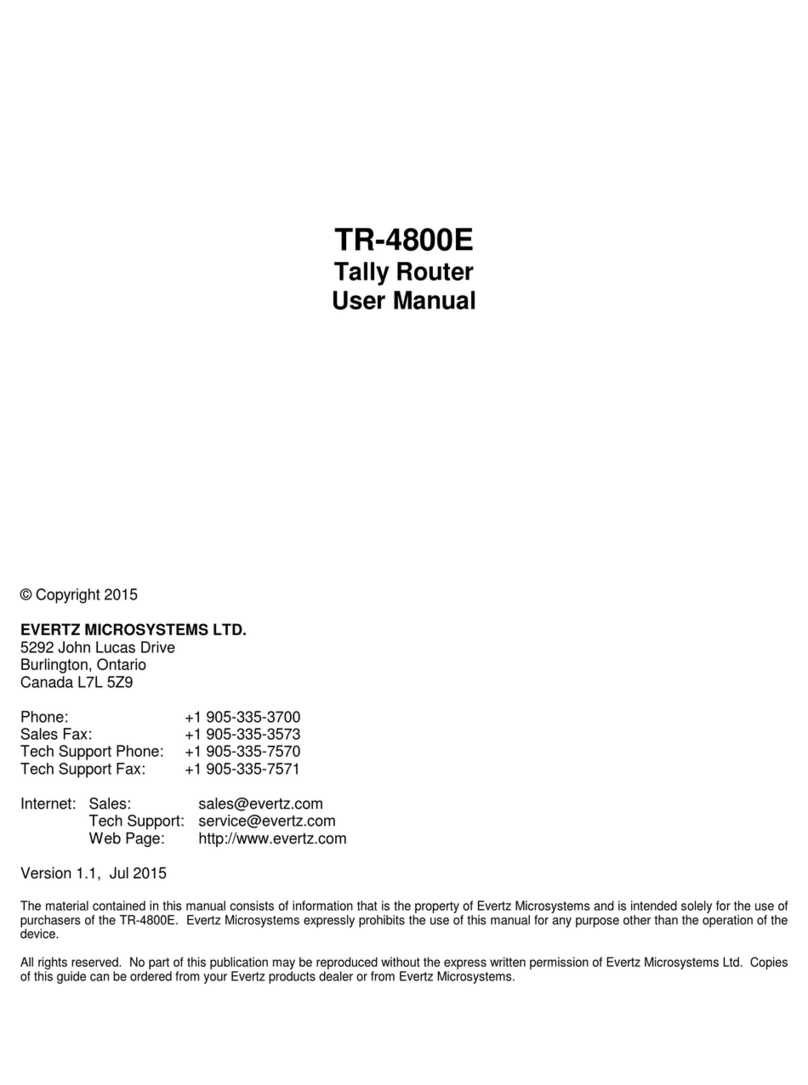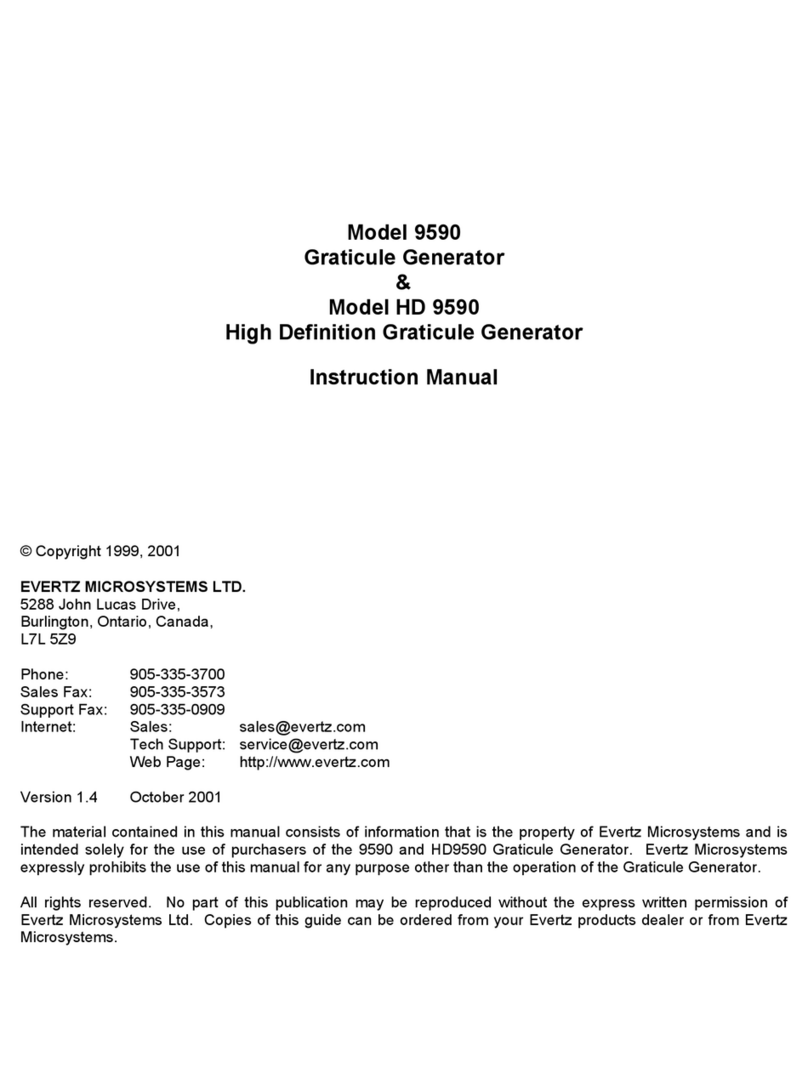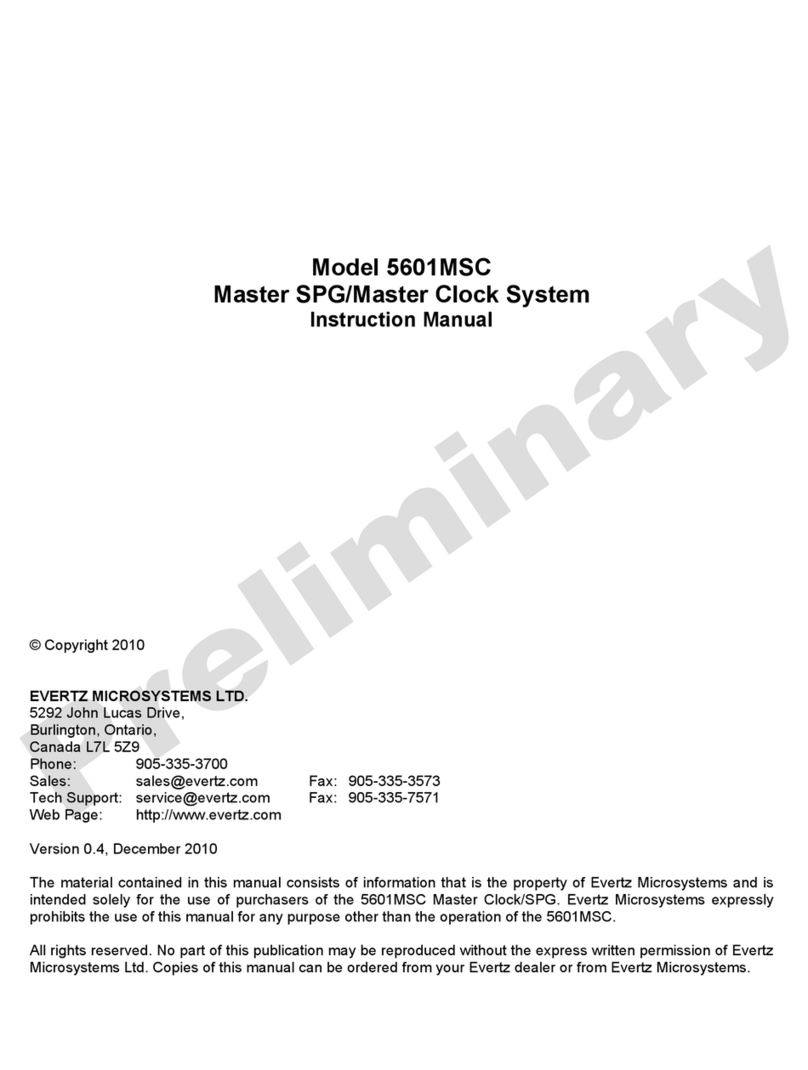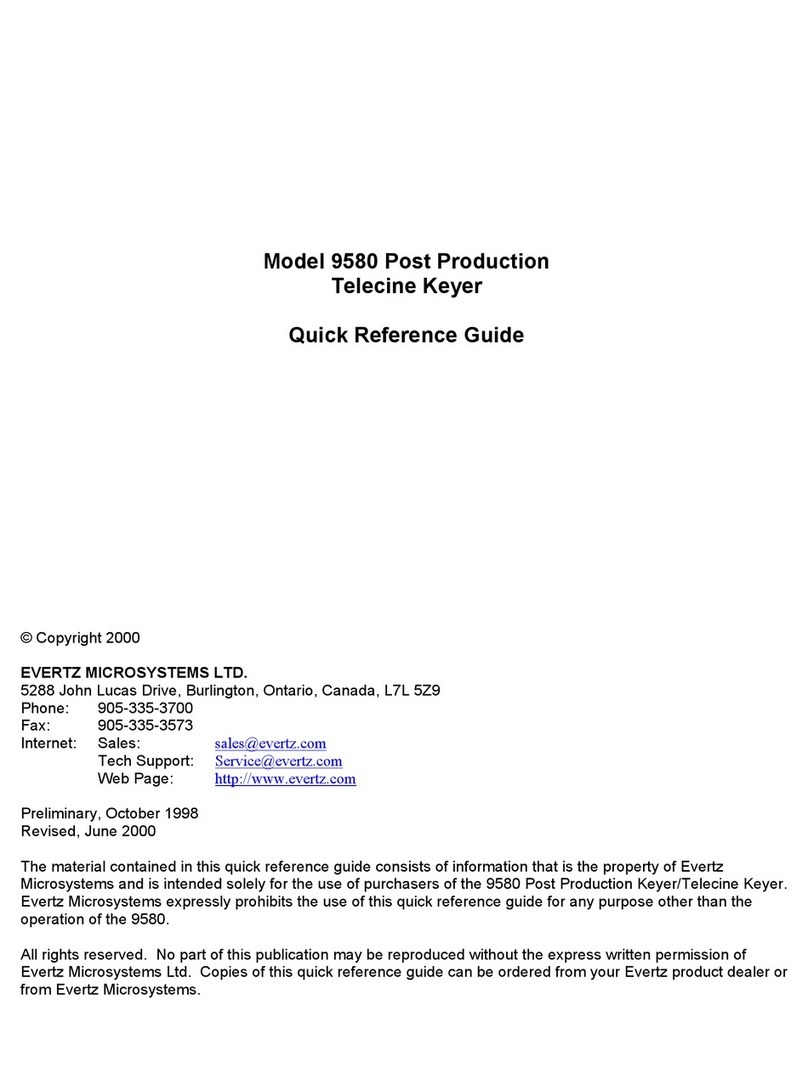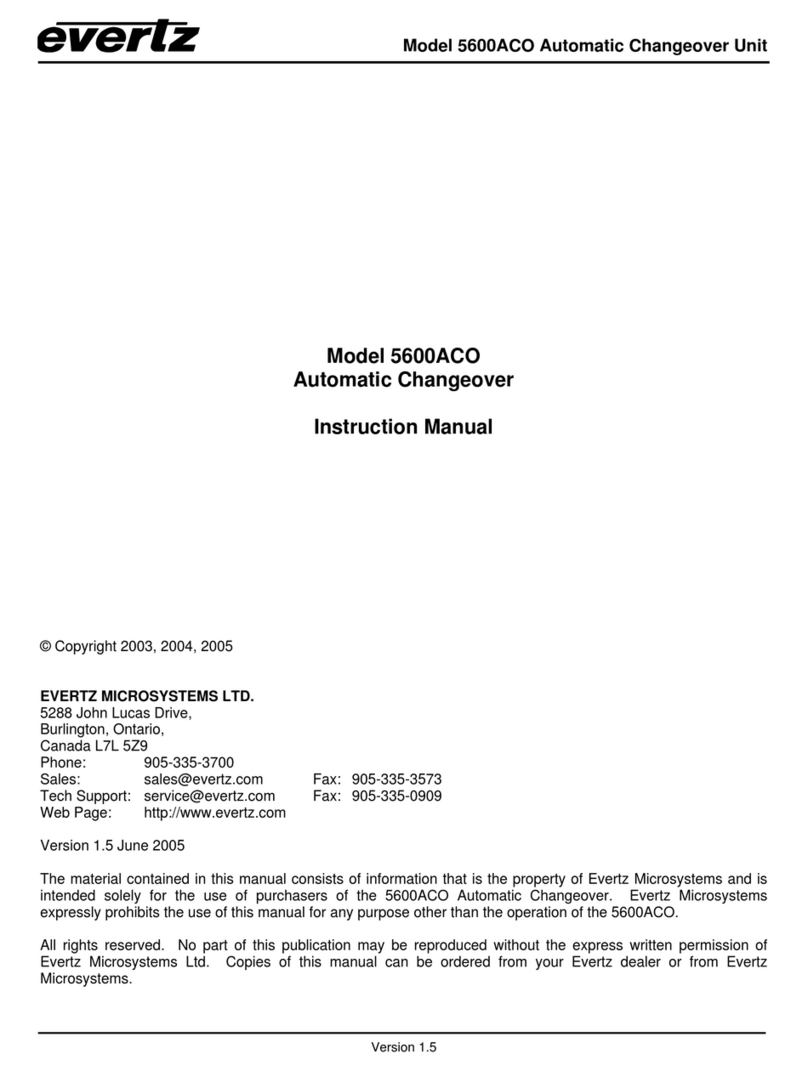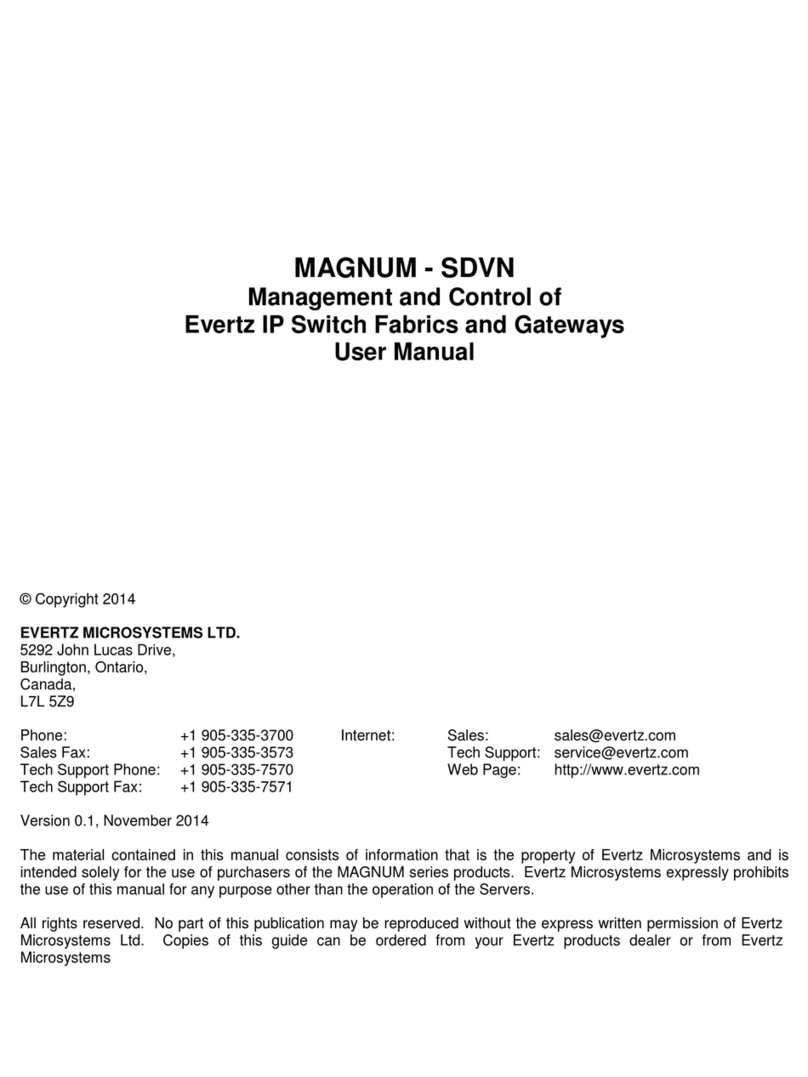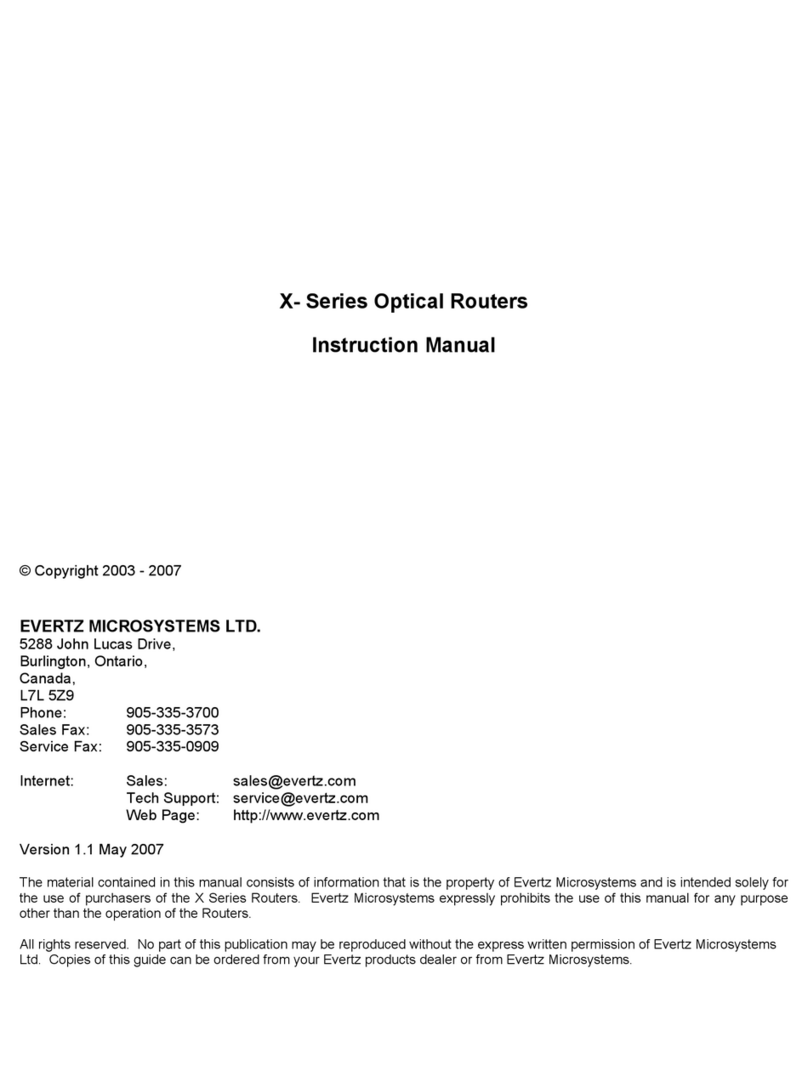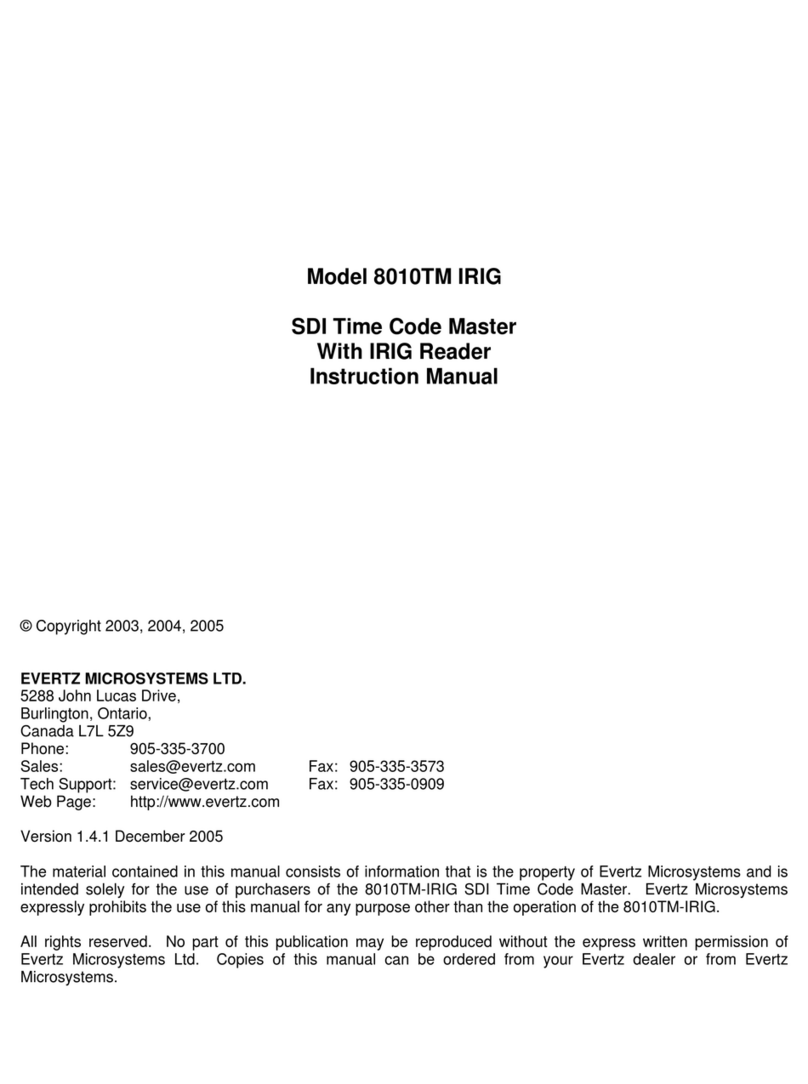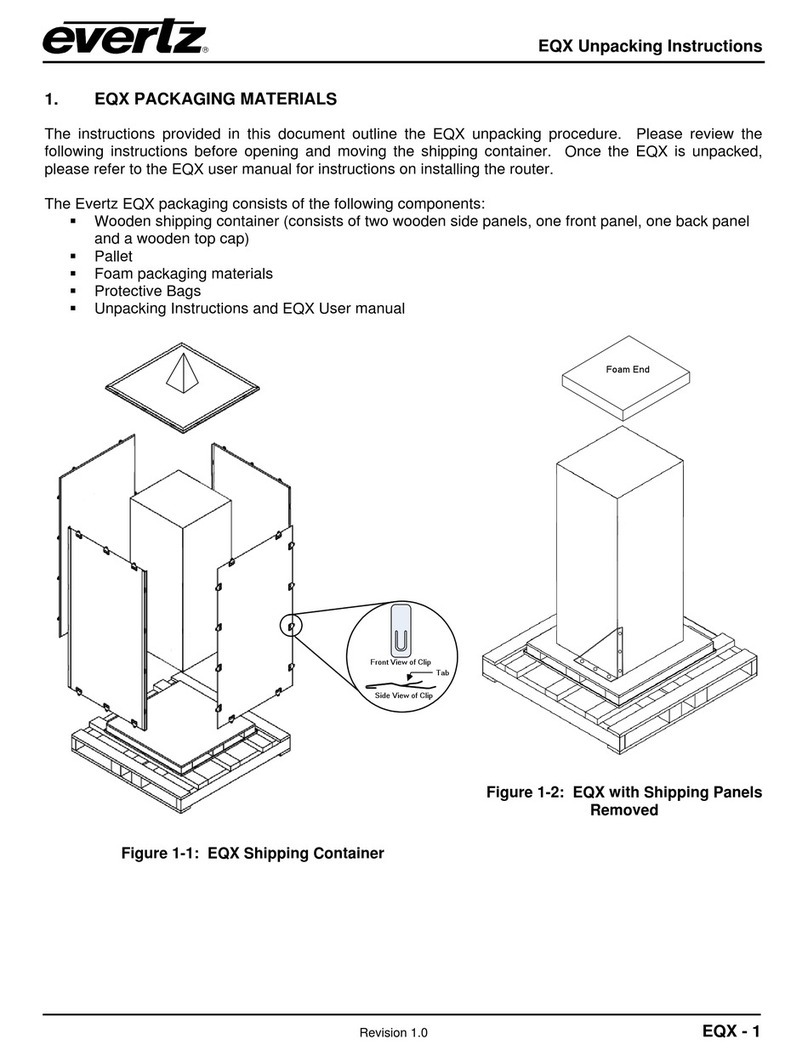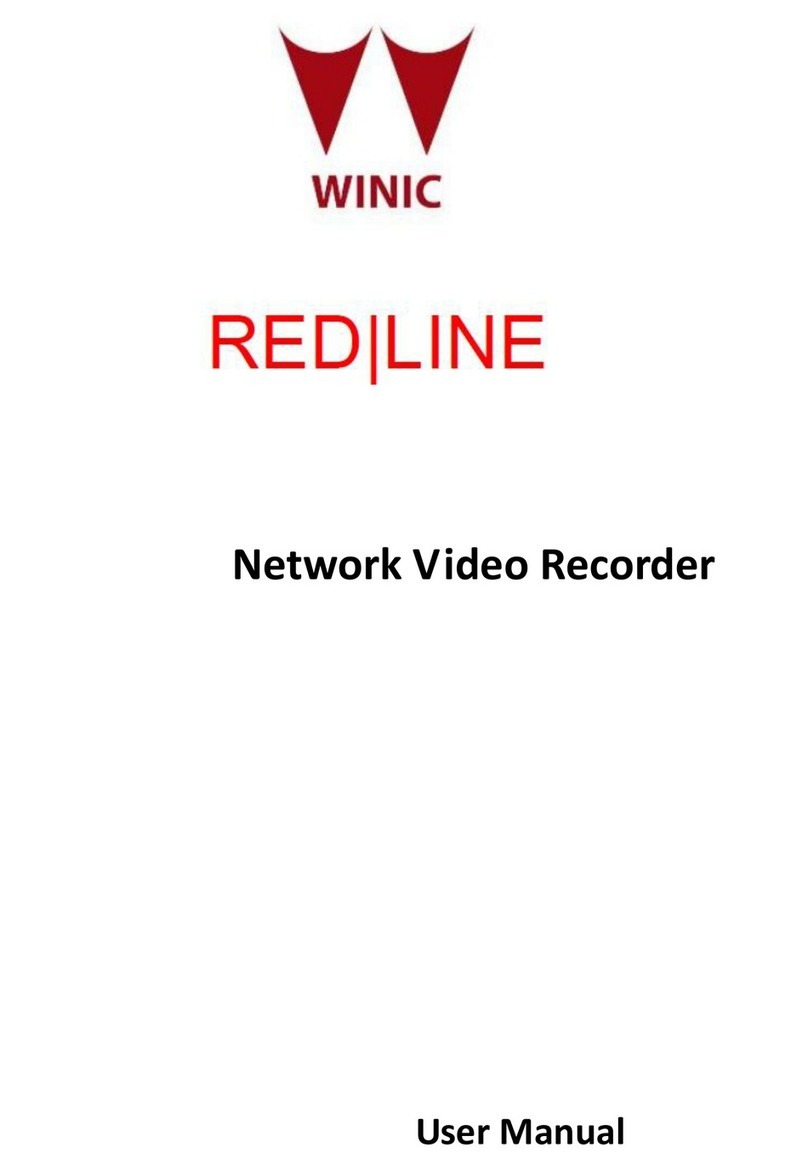
Model 8025 Digital Video Keyer Manual
TABLE OF CONTENTS ii
4.2. JUMPERS AND SWITCHES.......................................................................................................4-1
4.2.1. DIP Switch Functions.................................................................................................... 4-1
4.2.2. Jumper Functions - Main Board.................................................................................... 4-2
4.3. CIRCUIT DESCRIPTION............................................................................................................. 4-2
4.3.1. Microcontroller (8025-36).............................................................................................. 4-3
4.3.2. Front Panel Display and Pushbuttons (5220-31).......................................................... 4-4
4.3.3. Parallel Digital Video Input and Output (8025-31) ........................................................ 4-4
4.3.4. Test Generator Oscillator (8025-37)............................................................................. 4-4
4.3.5. Serial Digital Video Input (8025-33).............................................................................. 4-5
4.3.6. Serial Digital Video Output (8025-34)........................................................................... 4-5
4.3.7. Input Multiplexer and Keyer LCA (8025-32, 8025-25, 8025-37)................................... 4-6
4.3.8. Analog Composite Monitor (8026-31, 8026-32)............................................................ 4-6
Figures
Figure 2-1: 8025 Rear Panel........................................................................................................2-1
Figure 2-2: Digital Video Input Connectors...................................................................................2-1
Figure 2-3: Digital Video Output Rear Panel Connections ...........................................................2-2
Figure 2-4: Keyer Rear Panel Connections..................................................................................2-2
Figure 2-5: Analog Monitor Rear Panel Connections...................................................................2-3
Figure 2-6: Connections to a 4025 Film Footage Encoder for Digital VITC Keying
(version A with 8 digit display)......................................................................................................2-8
Figure 2-7: Connections to a 4025 Film Footage Encoder for Digital VITC Keying
(version B with 12 digit display)....................................................................................................2-9
Figure 2-8: Connections to a 4025 for Digital and Analog VITC Keying
(version A with 8 digit display)....................................................................................................2-10
Figure 2-9: Connections to a 4025 for Digital and Analog VITC Keying
(version B with 12 digit display)..................................................................................................2-11
Figure 3-1: Version A Front Panel Layout ....................................................................................3-1
Figure 3-2: Version B Front Panel Layout ....................................................................................3-1
Figure 3-3: Overview of the 8025 Programming Menu System....................................................3-5
Figure 4-1: DIP Switch Functions.................................................................................................4-1
Figure 4-2: Block Diagram............................................................................................................4-3
Drawings......................................................................................................................Drawing #
Parallel Video I/O Schematic............................................................................................. 8025-31F
Serial / Parallel Mux And I/O Schematic............................................................................ 8025-32F
Serial Video Input Schematic ............................................................................................8025-33F
Serial Video Output Schematic.......................................................................................... 8025-34F
Digital Video LCA Schematic............................................................................................. 8025-35F
Microprocessor And Eprom Schematic ............................................................................. 8025-36F
Monitor Submodule Header, Tri Oscillator And Control Inputs Schematic....................... 8025-37F
Power Supply Dip Switch And Display Header Schematic................................................ 8025-38F
Clock Buffer And Phase Restorer Schematic.................................................................... 8025-39F
Main Board Component Layout......................................................................................... 8025-80F
Display Board Schematic ..................................................................................................5220-31B
Display Board Component Layout.....................................................................................5220-85C
Video Encoder...................................................................................................................8029-30B
Digital I/O Submodule Headers.........................................................................................8029-31B
Option CC D’Code Circuit..................................................................................................8029-32B
Top Component Layout.....................................................................................................8029-80B
